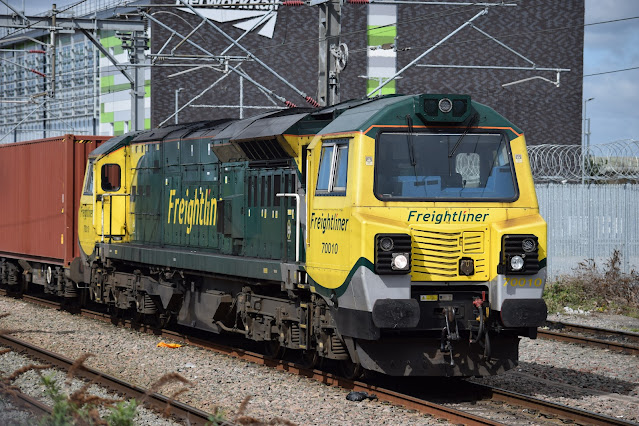Continuing my series of treks to discover junction stations
I have never previously visited, and following Leamington Spa and Huddersfield,
I descended yesterday on Rugby. I knew it as the former crossing place of the
LNWR main line by the GCR, though no trace of that remains today. Rugby’s
situation as a 7-way junction is also a thing of the past, reduced now to four
[minus those to Peterborough, Leamington Spa and Leicester], in the directions
of Euston, Northampton, Crewe and Birmingham.
It’s a funny old set-up at Rugby. A vast, central island
platform is flanked by two much more recent affairs. Occupying the middle one
is an enormous red brick monolith, opened, as the plaque indicates, from 1886.
To photograph it, I had to leave the station, walk to the far end of the
adjacent car park and raise my camera above the serious-looking metal fencing of
the type that Network Rail just can’t get enough of.
The platforms are linked to the exits on either side by a
subway. The modern entrance on the south side of the station is externally quite
presentable, if a little cramped once inside. Barriers are in operation at both
ends of the subway. The main building is partially hidden by modern canopies
that replaced the overall roof, which I remember seeing in pictures from the
1960s. I walked right round the island building, looking for signs of life. In
addition to the toilets, I found an information centre that seemed to be for
railway personnel rather than for travellers. Avanti safeguarding officers [it
said so on the back of their uniforms] came in and out of there with some
regularity and sometimes three at a time. We were being very well guarded at
Rugby. A bike shop announced its presence in one of the spaces at floor level, thought
it appeared to be closed, and a cavernous waiting room, now a customer lounge, occupied
another. Mainly, the enormous building did not seem to be being used at all.
There wasn’t even a functioning buffet, though I did notice an arrow pointing
to a WH Smiths and presumably some take-away options? Online, Avanti makes no
mention of refreshments under station facilities. However, Network Rail’s site
suggests they do exist, but maybe they meant the WH Smiths shop. Anyway, I couldn’t
find it and so I went back to Nuneaton to get a cup of coffee.
The question is, I suppose, what is to be done with
substantial Victorian railway buildings in the modern age, now that patterns of
use have dramatically changed. I don’t want them to be knocked down but I
accept that maintaining them whilst they do nothing is costly in itself.
Creative management would seem to be the answer - how to persuade organisations
to make use of the opportunities provided by some solid edifices that don’t
always have [as here] immediate road access but are available at [presumably]
cheaper rental rates. I left Rugby thinking that it was one of the least
welcoming and incongruous of stations I can remember visiting - windswept and
soulless. I have no idea what, if anything, happens in all those upstairs rooms,
which are only visible at a distance from the station.
In 1866, Charles Dickens waited between trains here after a fire in a carriage on the one on which he had been travelling north. Receiving short shrift from the manageress in the refreshment room, he got his own back in the short story, Mugby Junction, in a thinly-veiled disguise of the target of his piece. At least he had found one, and it was open.






No comments:
Post a Comment